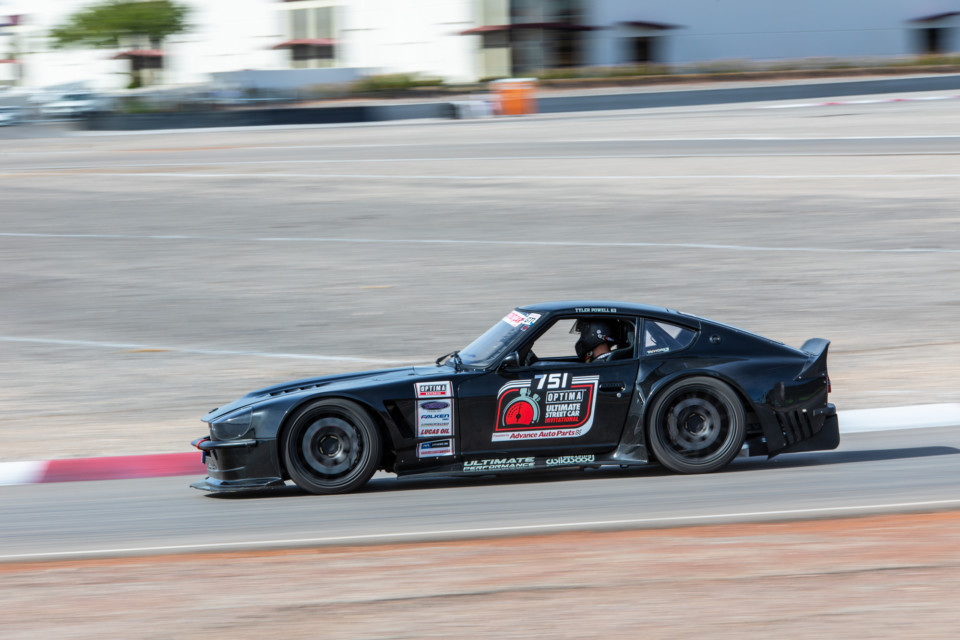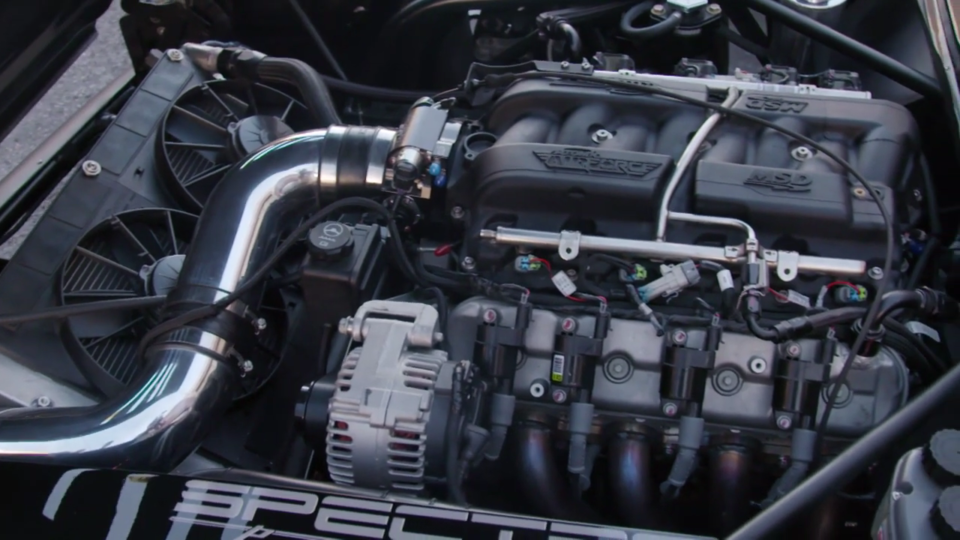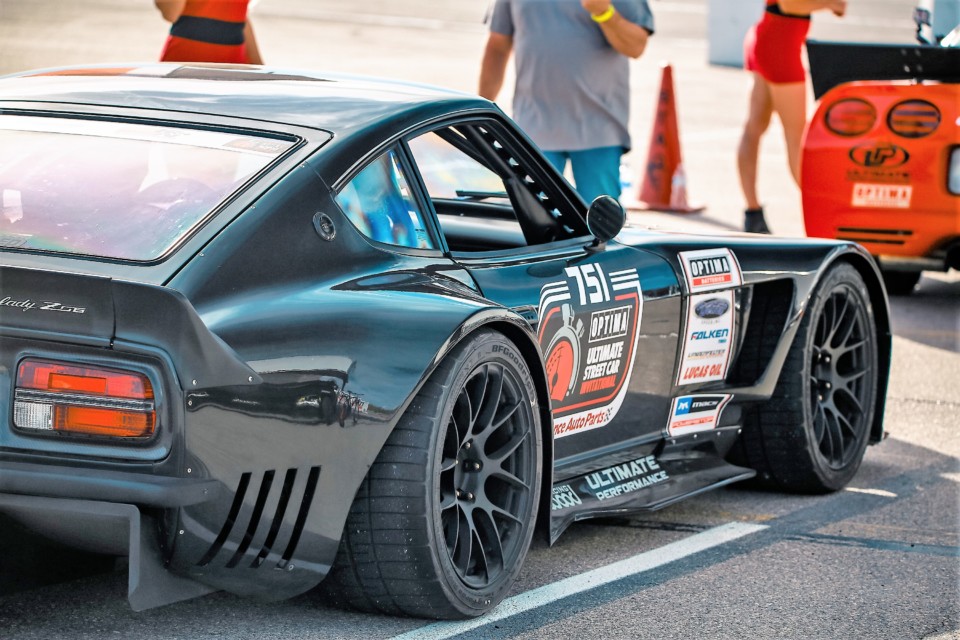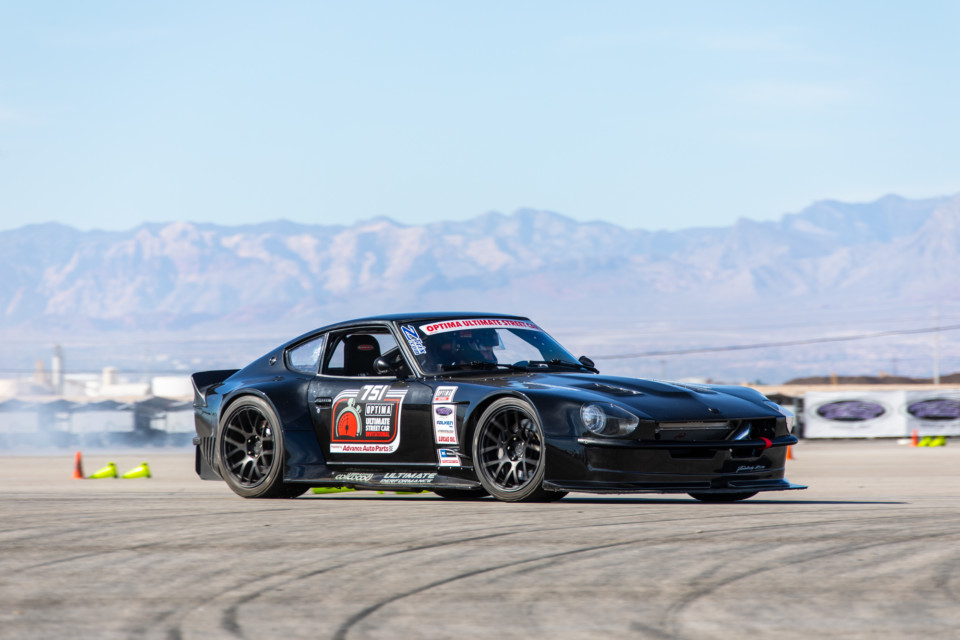At the 2018 OPTIMA Ultimate Street Car Invitational, Tyler Powell’s Datsun 240Z definitely stood out. However, it’s able to rub shoulders with the rest of the big-bore pro tourers because they share a common heart. Underneath the lengthy hood lives a Chevrolet LS7, which propels a caged car weighing around 2,650 pounds. Though those stats alone are enough to draw a massive audience, this machine, dubbed the Fairlady Z06, offers so much more.
Powell began the build by piecing together two battered 240Zs he found for less than $1,000. Then, after finding an LS7 with a broken ringland, he modified with with a slew of parts to provide a powerband with usable low-end torque and no sacrifice up top.
Top-quality Components
Some of the components used in the fully built motor are a Holley 95mm throttle body, FAST injectors, Mahle pistons, titanium rods, ARP fasteners, and a Katech dry-sump oil pump. Lingenfelter’s LS7 CNC-ported heads and a custom-grind camshaft that makes the torque manageable while retaining a screaming top end. And, of course, starting power provided by an Optima battery. Note how effortlessly the car fires out of hairpins with only hints of wheelspin; a tractable powerplant is incredibly important on slow autocrosses.
But traction is just as important when putting the power down. In an attempt to reuse as many of the factory components as possible, Powell fitted the Z06’s transaxle in the rear, but he shortened the torque tube 15″ to fit the 240Z’s 90″ wheelbase.
Corvette Transaxle
Fortunately, the factory TR6060 gearbox is very stout, so a McLeod RXT twin-disc clutch and a Fidanza flywheel are all that’s needed to harness the torque. With such a strong foundation to build upon, he didn’t have too much difficulty retaining some of the stock pieces, but it’s obviously a far cry from factory.
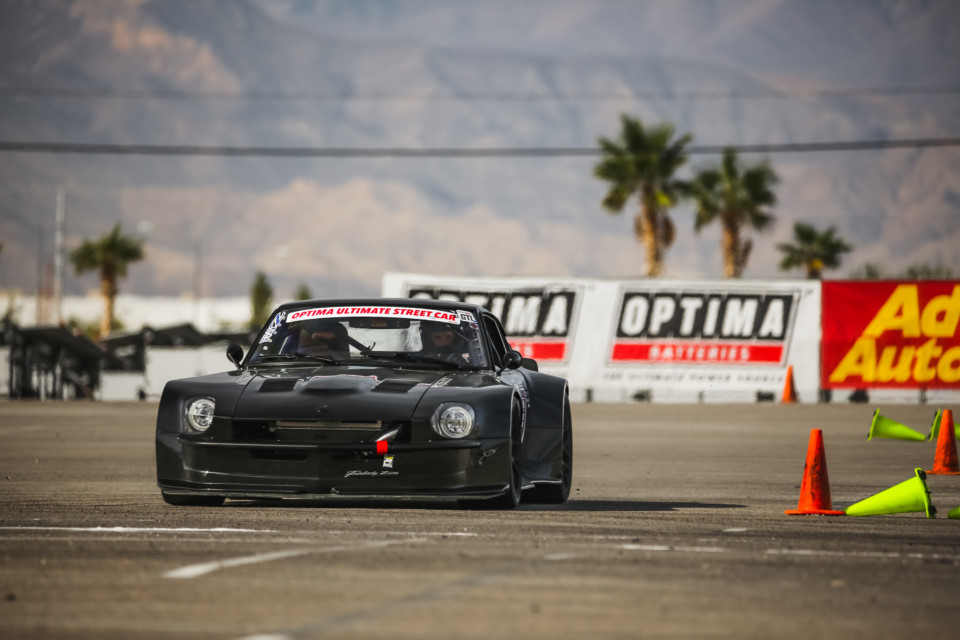
The Fairlady Z06 puts it 560 horsepower to the pavement cleanly and without fuss. Photo credit: OPTIMA Batteries
A build this extravagant requires plenty of homebrewed ingenuity and custom parts. Even with the transaxle aiding balance front and rear, the car still needs massive tires and a wide track to make good use of the power. To fit rubber of the necessary width, he had to get creative.
Bolt-on fender flares were the first steps in widening the 240Z, but soon after, Powell picked up a ZTrix 280YZ kit. The custom widebody is 1.5″ wider than the standard Z06—not a narrow car by any stretch—and the footprint is appropriately massive. The BC Forged RS40 wheels are wrapped in BF Goodrich Rival S tires measuring 315- and 335-sections front and rear, respectively. Wide rubber and a short wheelbase amount to a snappy breakaway, as we see here:
Predictably, the suspension is trick. Corvette CX-R tubular control arms, a set of JRI coilovers, and a custom tubeframe all give the car the sense of urgency and crisp directional change an autocross rocket should have. Additionally, the coilovers can raise the car 2.5″ when the surface becomes too rough for a lowered car. When the Z needs to come to a halt, Powell prods the middle pedal and calls on his Wilwood Aer06 big brakes. With 14″ rotors up front and 13″ rotors in the rear, this system brings things to a stop quite quickly. Where performance is concerned, there’s no area in which this car is lacking.
Track-proven Performance
This 240Z’s combination of surreal looks and otherwordly performance draws a large crowd. Last year, after the admiring fans at SEMA left, the Z turned more heads at Las Vegas Motor Speedway. The monster finished in the top-half of the field in the Falken Tire Road Course Time Trial, and fared even better in the Detroit Speed Autocross and PowerStop Speed Stop Challenge.
Then it went on to stun the judges in the Lingenfelter Design & Engineering Challenge, where it finished fifth. The car came in 22nd place; the highest place for any car which hadn’t run at a qualifying event in 2018—and nothing to sniff at. However, for a man with his sort of standards, it’s fair to assume Powell will be back for an even better result next year.



